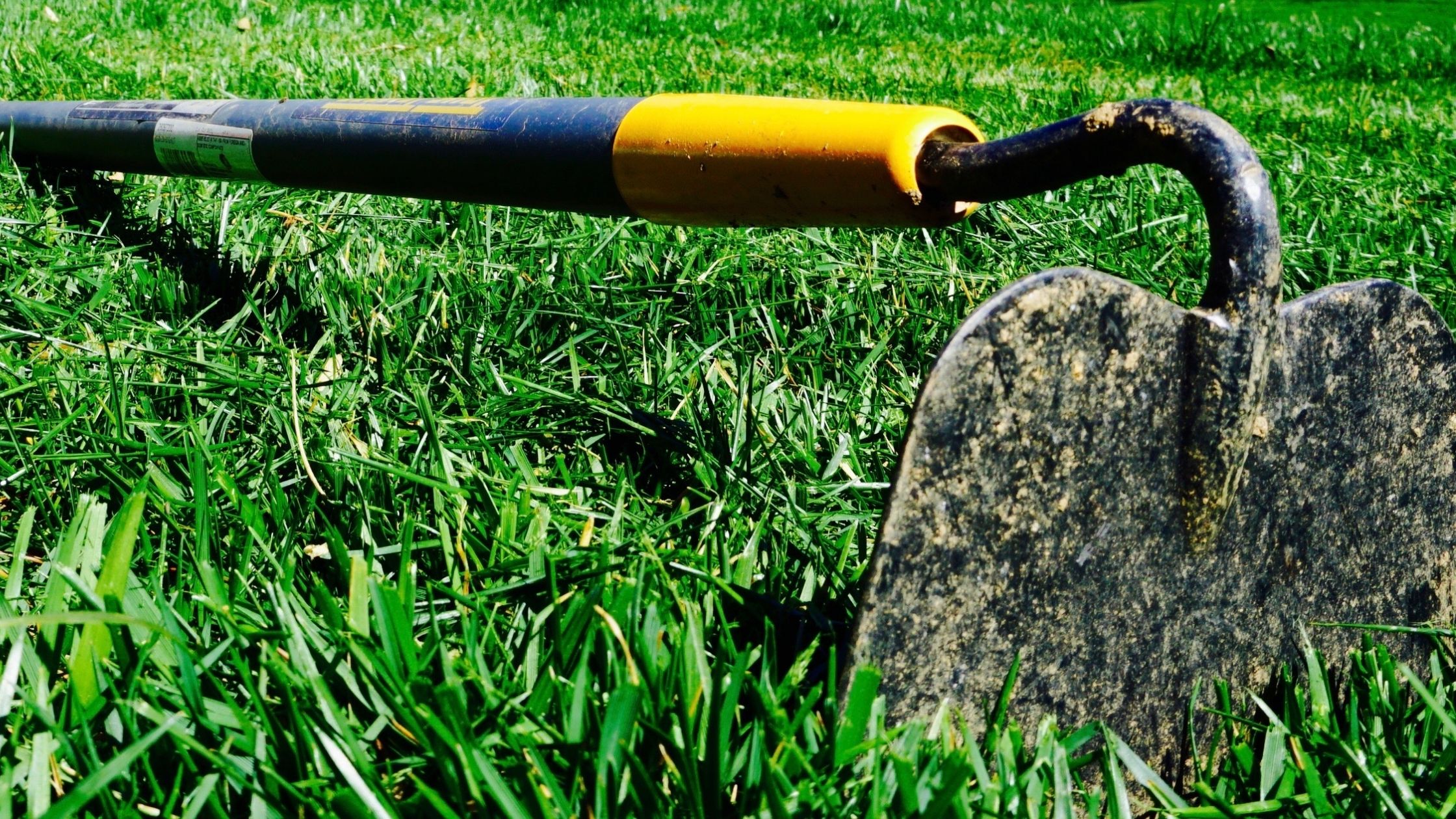Need any type of Garden Hoes?
The moral of the story is that it pays to take the time to learn more about your gardening tools. It can save you a lot of time and trouble down the road.
Secondly, let’s get another thing straight –there are no good or bad gardening tools. The best garden hoe for you is the one that meets your requirements and helps you get the job done quickly and efficiently. Read on to learn more about different types of garden hoes.
Types of Garden Hoes
It is important to understand that while numerous types of garden hoes are available in the market, if we group all these tools according to purpose, action, and soil, we will end up with five broad categories.
The categories may overlap at some points as some hoes may fall in more than a single category. Regardless, it is a good way to categorize different hoe types. So, without further ado, let’s dig a little deeper into these categories!
Digging Hoes
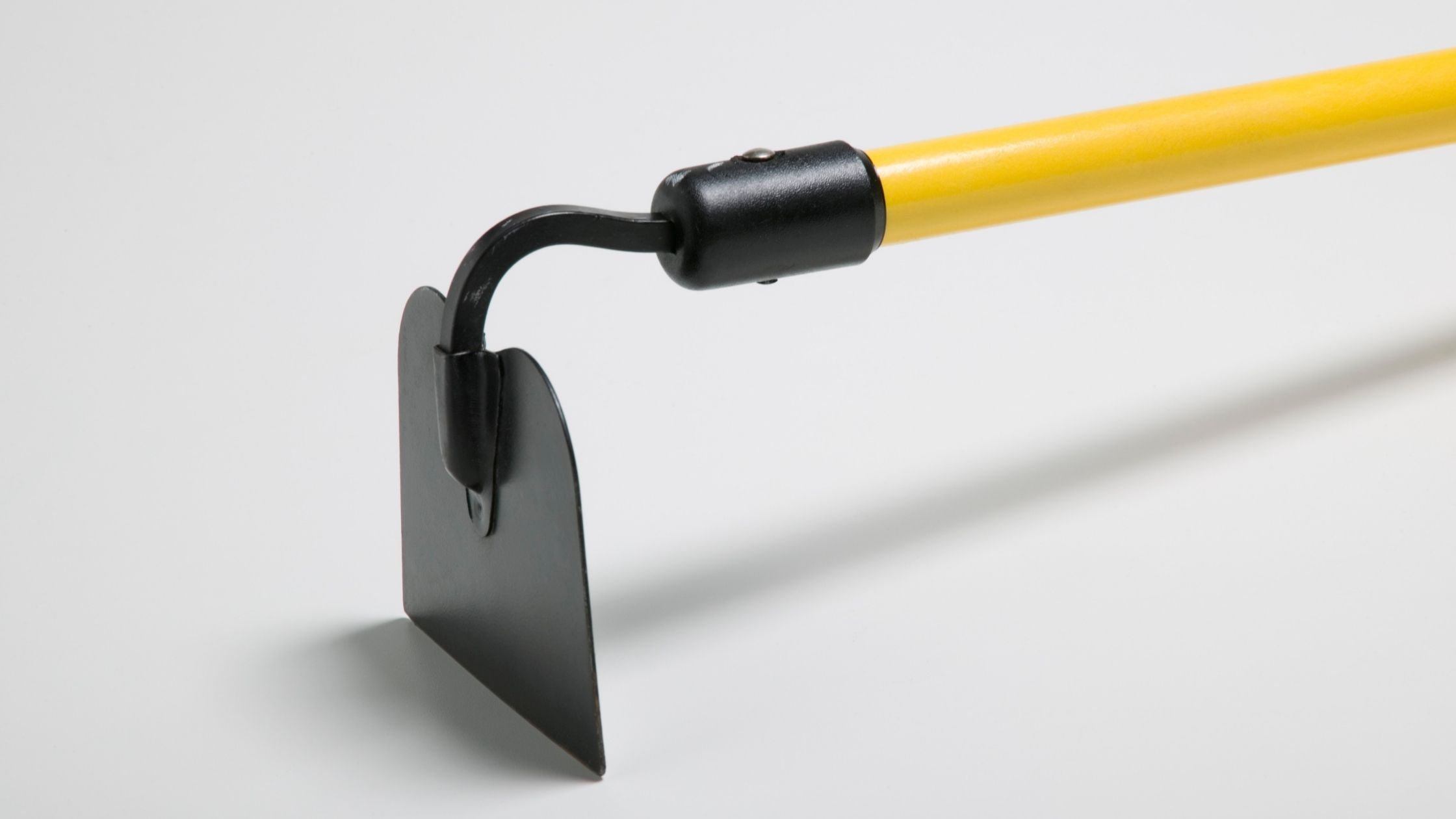
Digging hoes are one of the more traditional types of gardening tools. Featuring a heavy blade, these garden hoes are ideal for digging and tilling with a chopping action. You can use them to chop through sods to make garden space or keep the soil tilled and loose.
Today, many gardeners use a plow or rototiller to perform these tasks. However, digging hoes can still come in handy, especially if you don’t want to spend on gas-powered equipment. They can be used for all types of soils. Some examples of digging hoes include the following.
Grubbing Hoe
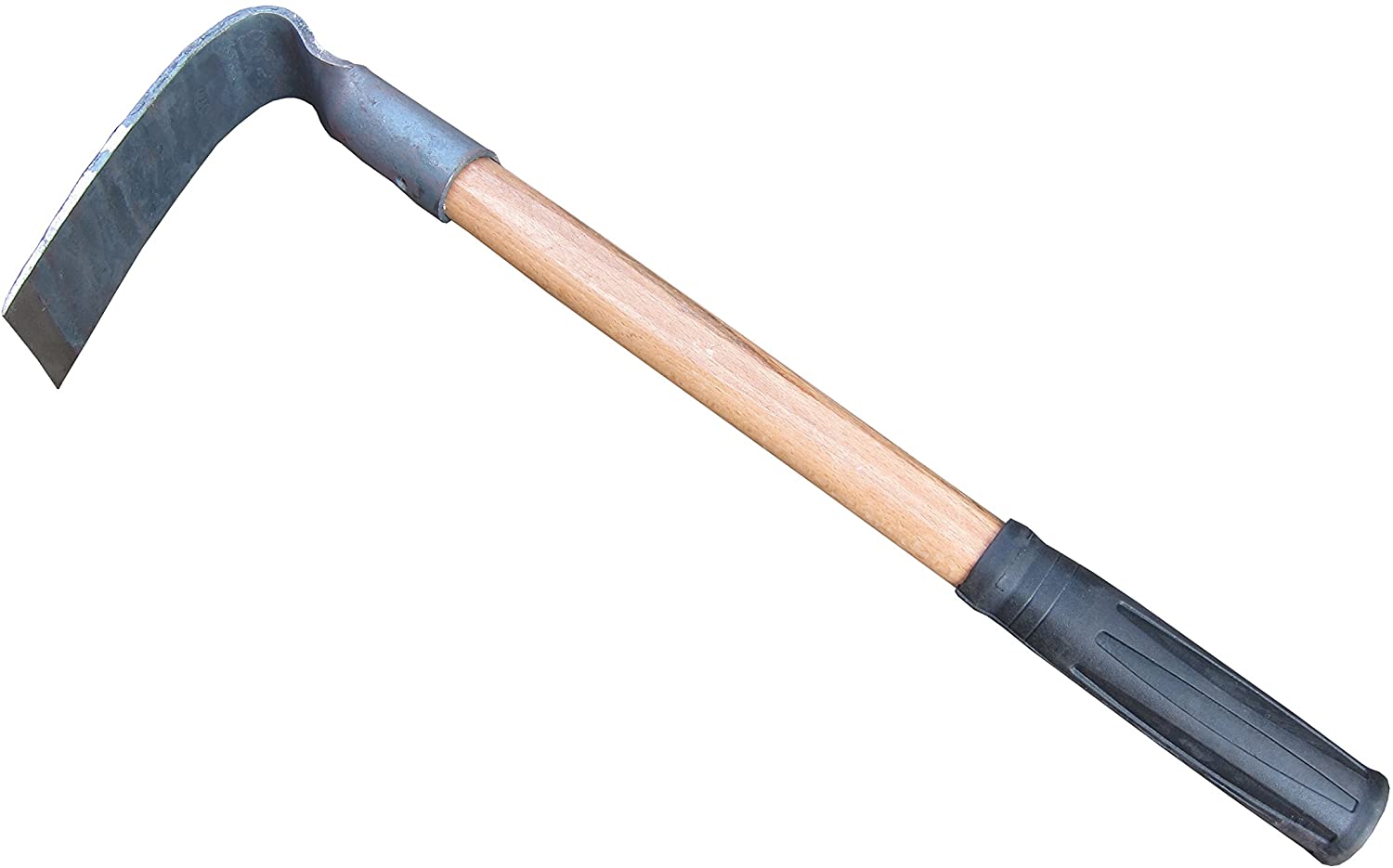
Also known as a grub hoe or Azada, a grubbing hoe is a kind of digging hoe designed for heavier work. The blade is weighted and set perpendicular to the long wooden handle. Whether you are working on tough sod, very hard soil, or weeds, the grubbing hoe will get the job done. You can also use the best grubbing hoe to chop up compost or digging trenches for waterways and irrigation.
Fork Hoe

With long tines set perpendicular to the shaft, a fork hoe is shaped like a fork. It also goes by the name of prong hoe, bent forks, or tined hoe. It is generally used to loosen and aerate the soil before sowing or planting. It is also a great option to remove weeds along with their roots.
Ridging Hoe
A ridging hoe looks like something a grim reaper would carry. But let’s not judge a gardening tool by its looks because a ridging hoe is usually a solid, no-nonsense, and extremely useful gardening tool. Thanks to the blade sitting at a 90-degree to the shaft, a ridging hoe is far quicker than the standard spade. If you are making ridges, seed trenches, or earthing up veggies, a ridging hoe can make your life so much easier!
Draw Hoes
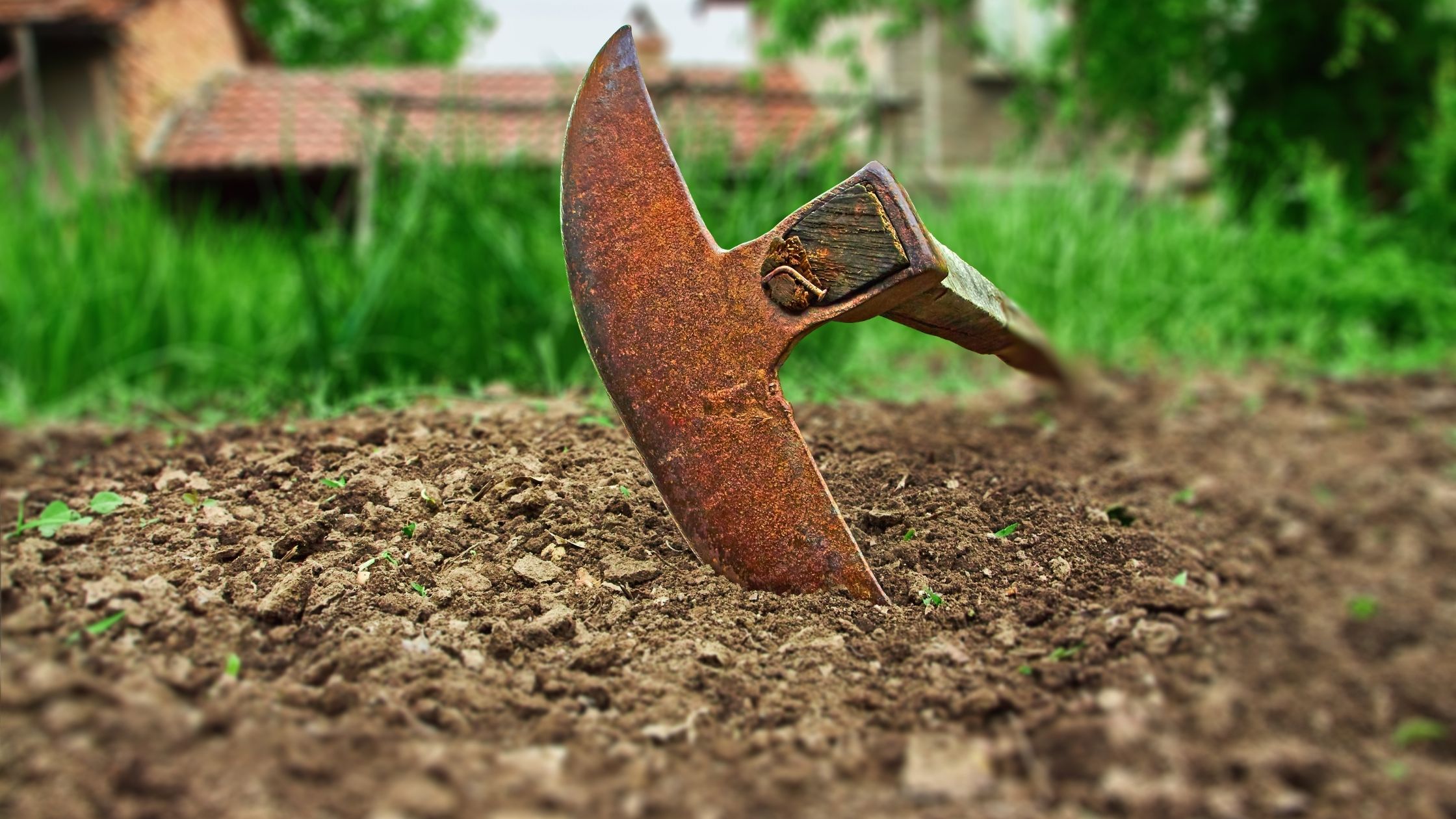
Draw hoes are easily the most common type of garden hoes. As these tools are not meant for digging, the blade is usually light and is used to scrape below or at the soil surface. Draw hoes are some of the best tools available for weeding in the hard or soft soil using the pulling or scraping action.
Scrap right below the surface if you want to rip the stems. On the other hand, if you want to uproot the weeds, scrape below the surface. Here are some draw hoes that you should know about.
Paddle Hoe
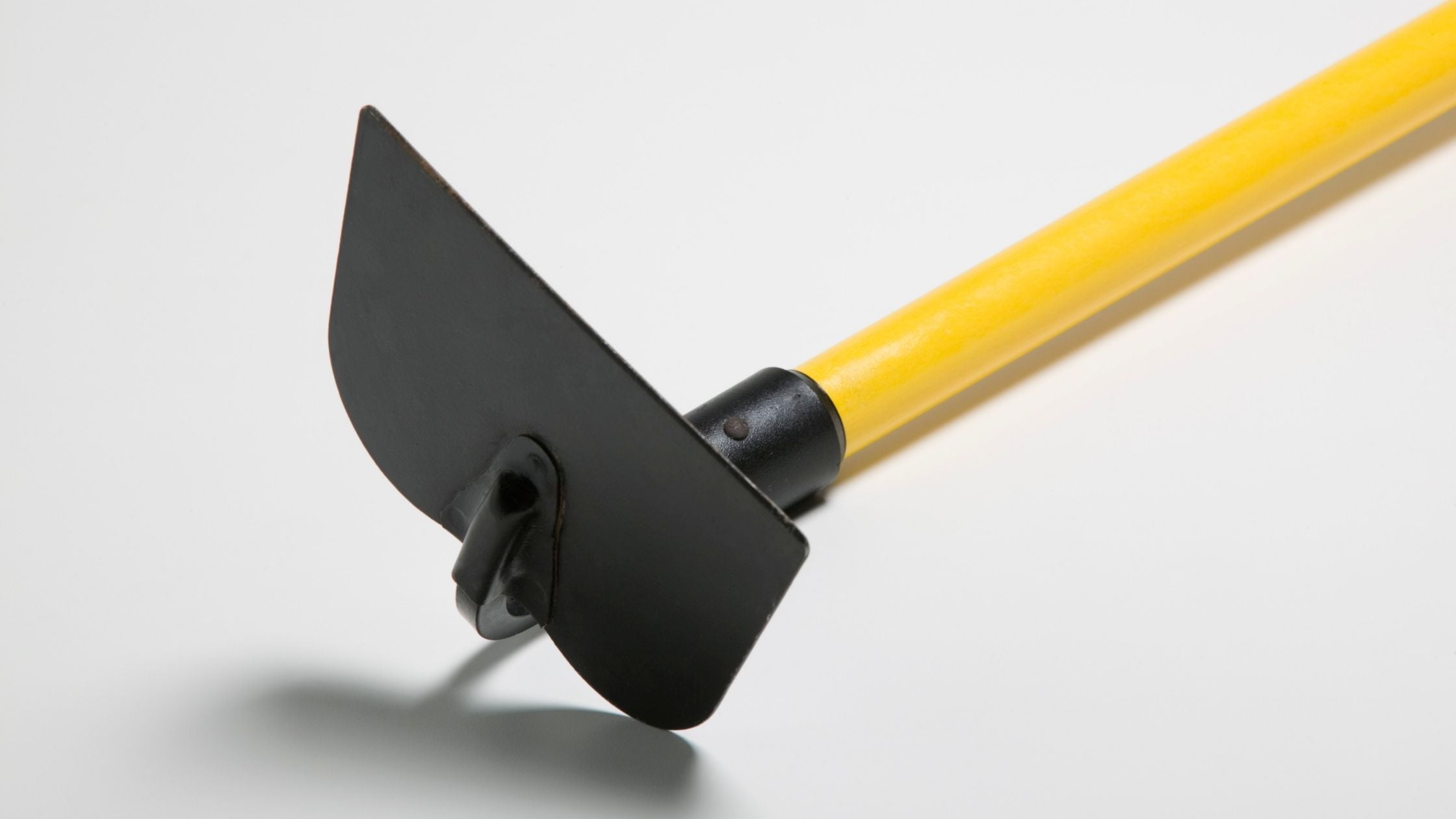
A paddle hoe is the basic draw hoe. It goes by many names, including paddle, planter, draw, and chopping. It is typically characterized by its small and rectangular blade angled at 90 degrees. If you are looking to dislodge weeds or shape soil, then a paddle hoe is for you. If you are relatively new to gardening or unsure how to use more specialized hoes, a paddle hoe is a good place to start.
Gooseneck Hoe

Made from hardened steel and features a flat agricultural disc blade, a gooseneck hoe is lightweight, versatile, and super easy to use. So when you have to reach in to cultivate tight spots on the back, front, or in-between crops, a gooseneck hoe might be the best choice.
Onion Hoe
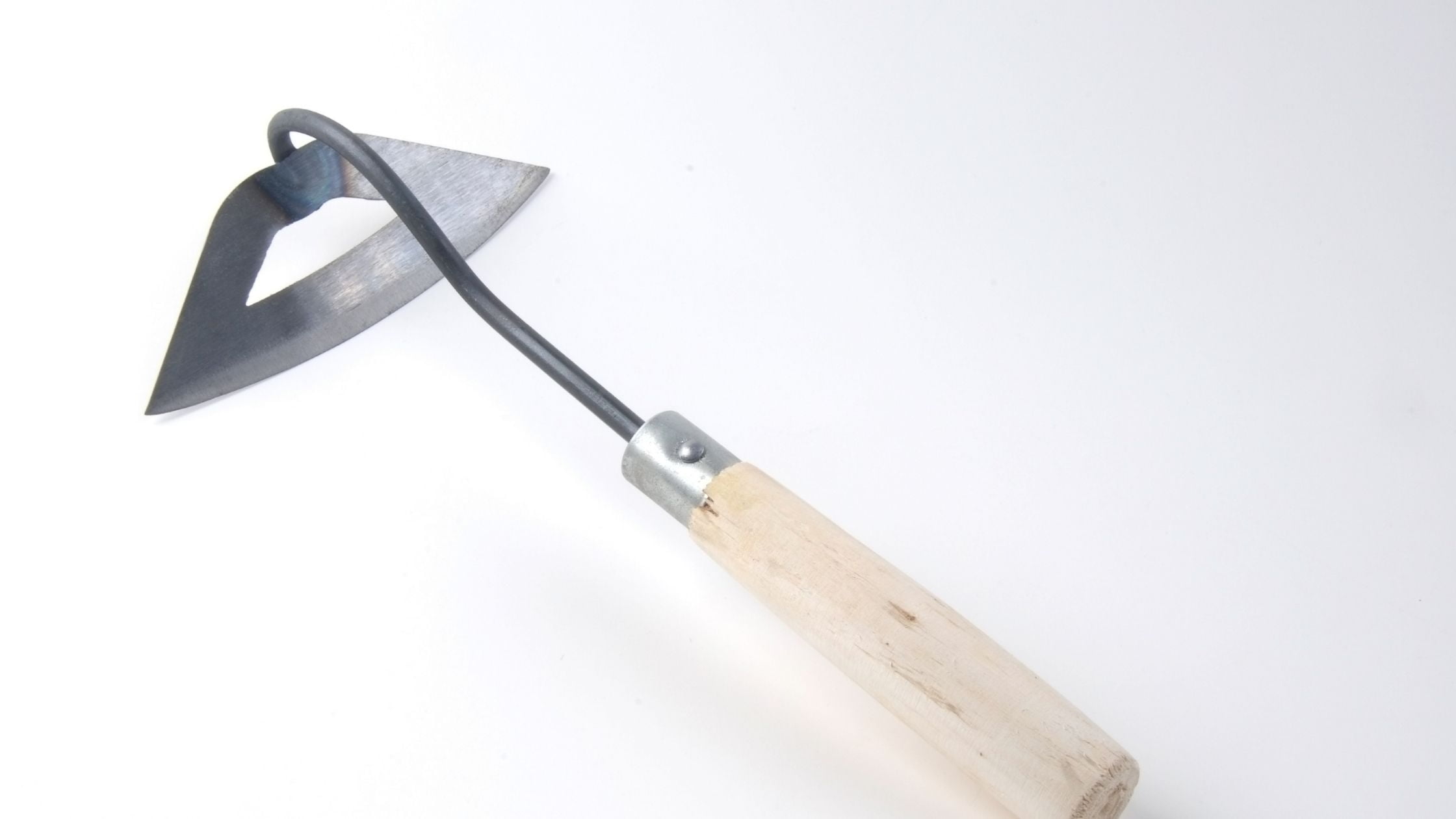
An onion hoe is one of the “Light” draw hoes. Light hoes are generally much easier to adjust because the neck tends to be longer and lighter. Onion hoes are characterized by a sharpened blade that is designed to remove weeds from under the surface quickly. The blade rides parallel to the surface of the soil.
The sharp edge is perfect for dealing with stubborn weeds, especially in small areas. However, like other light draw hoes, onion hoes are not designed for hacking, which could bend the neck and damage the hoe.
Eye Hoe
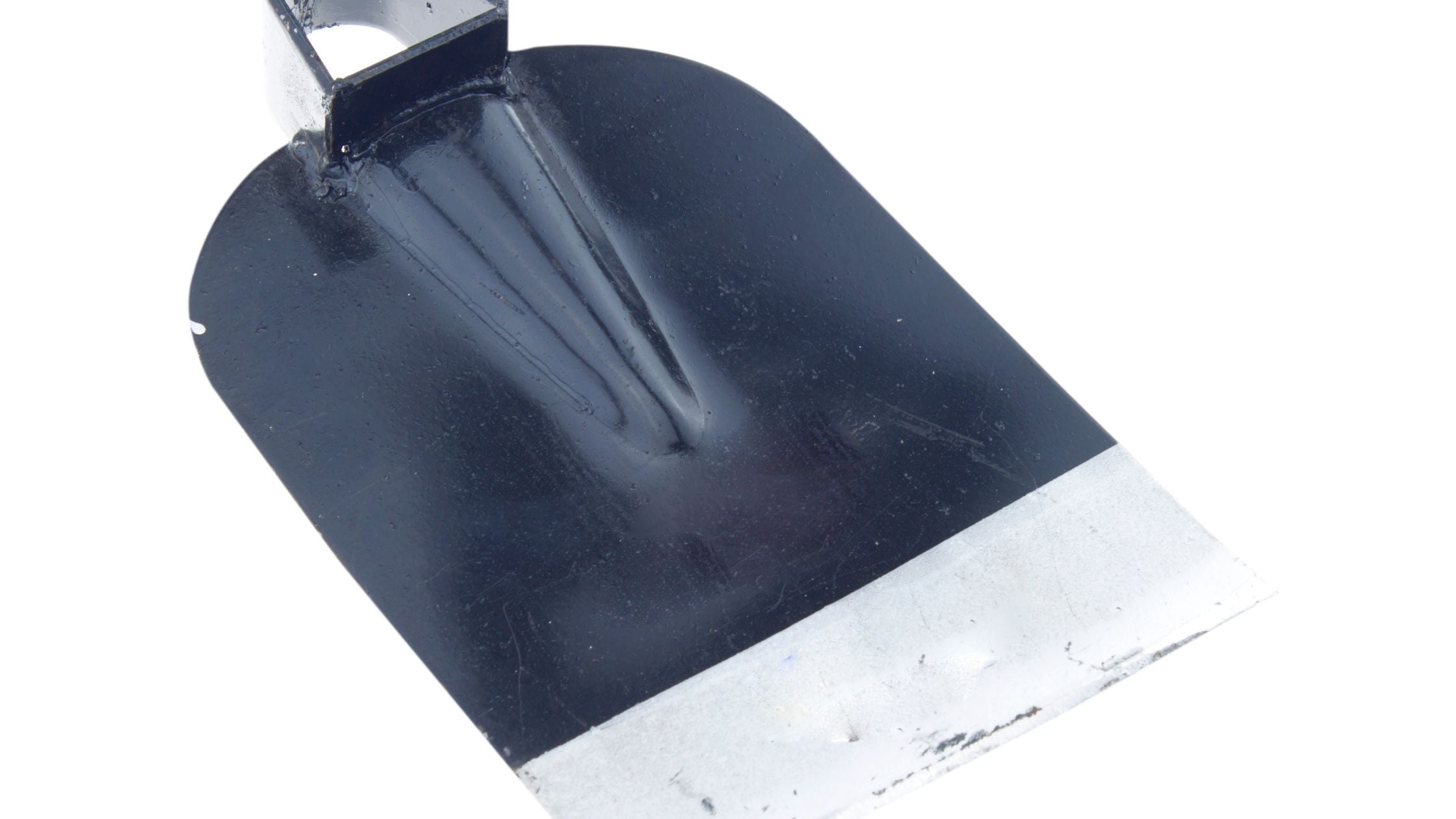
The Eye hoe is a heavy-duty onion hoe. It is easily one of the strongest and oldest designs. However, keep in mind that the blade angle of an eye hoe is not adjustable. Therefore, make sure the hoe is properly designed before you buy it.
These garden tools are strong enough to hack through grass clumps and enormous weeds. However, they are generally too big to be used for fine detailing or weeding close to crops. It is best to use your eye hoes for open spaces, paths, and rows.
Warren Hoe
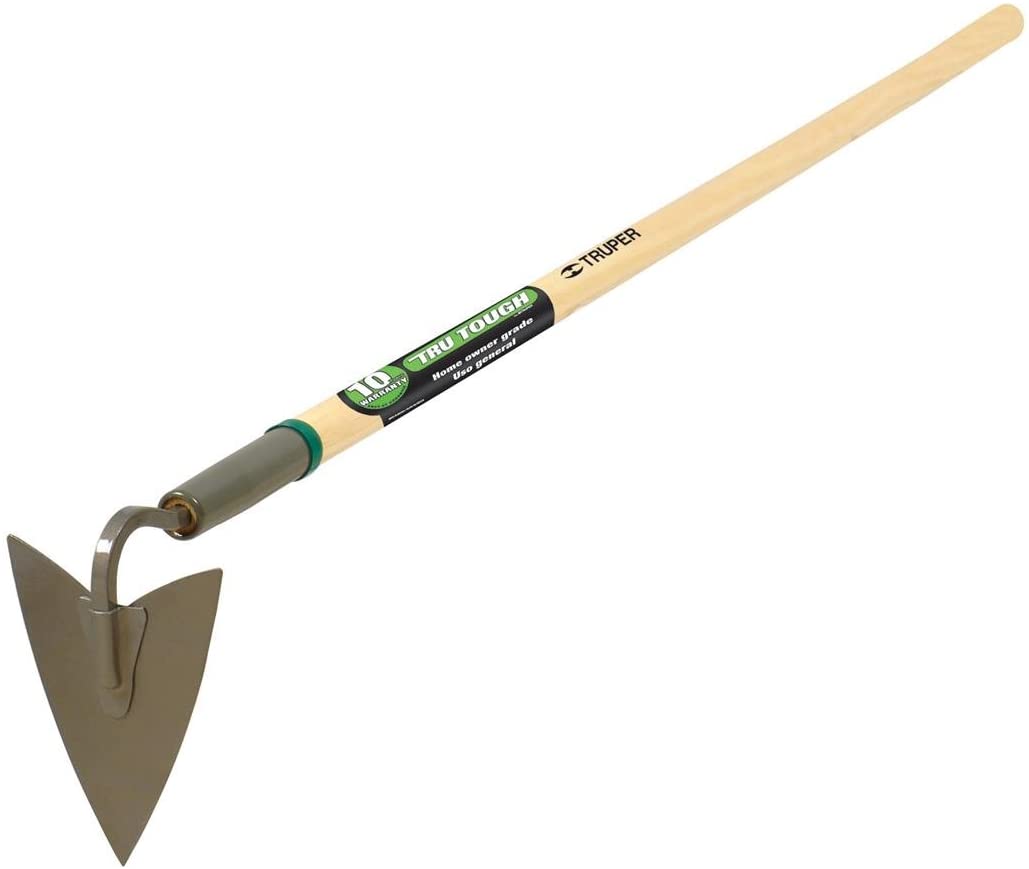
Warren hoe is another extremely popular type of draw hoe and is often considered to be the best draw hoe for beginners and experienced gardeners alike. The blade is long and pointy and is designed to be drawn through the soil in long strokes. While you can use your warren hoe for weeding in tight spaces, it is more commonly used to create long furrows for seeding or plowing the soil. The pointed tip also allows you to work close to existing plants.
Flat Hoes
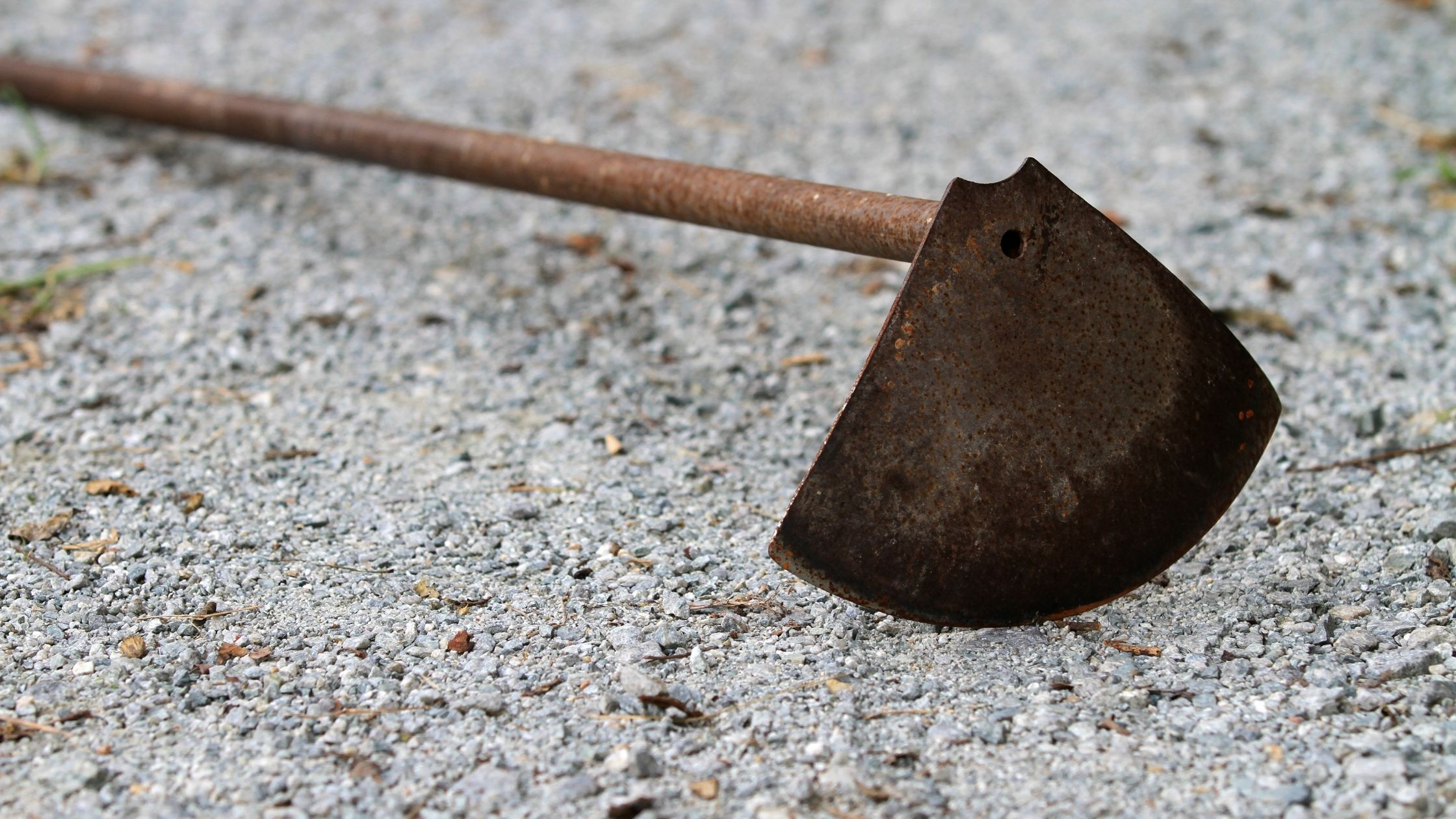
As the name suggests, the blade of a flat garden hoe lays flat on the soil. These garden tools are also used to tackle weeds with a push-pull action in soft soil. If you must use a flat hoe for weeding baked or hard soil, it is best to first loosen the soil with a Draw hoe and then use a flat hoe to finish the job. For best results, choose a flat hoe with an adjustable neck. Here are some of the most popular flat hoes.
Dutch Hoe
Featuring a flat blade, a Dutch hoe gardening tool is a kind of flat hoe. Also known as Push hoe, it is one of the most common garden hoes and is widely considered to be the easiest to use. The wide and open blade of a Dutch hoe is sharp faces the forward. Use the push-pull movement instead of the chopping motion to skim the blade just below the surface to sever weed roots. When used correctly, the best Dutch hoe will take the pain out of weeding.
Scuffle Hoe
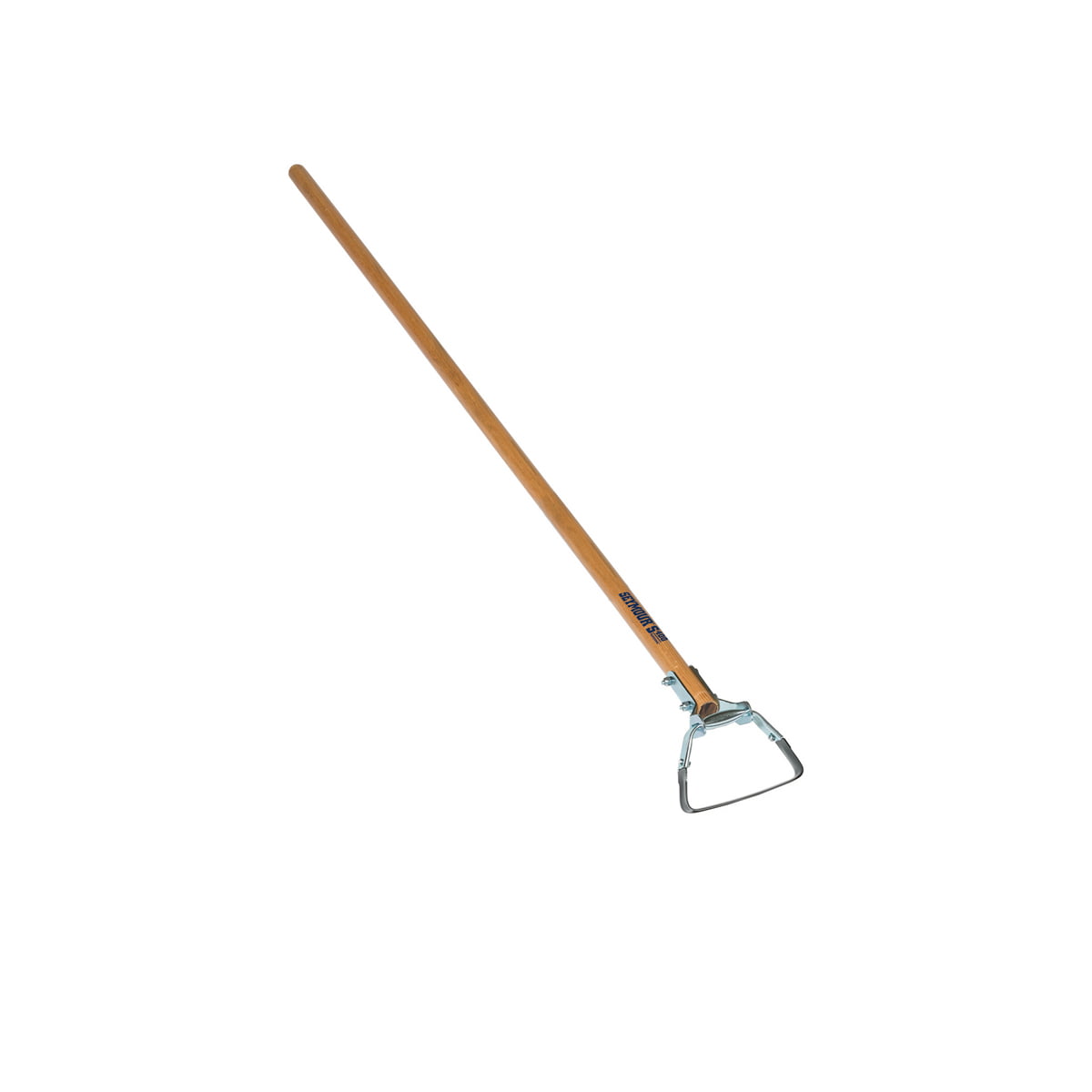
Also known as the loop, hoop, or stirrup hoe, a scuffle hoe is a kind of flat garden hoe with sharpened edges. As both the edges are sharp, you can push it forward as well as draw it backward. The variety of motion makes scuffle hoes highly versatile.
The back-and-forth motion really helps with digging out stubborn weeds without disturbing a lot of soil. While using your best scuffle hoe for weeding, slide the blade just below the surface to cut emerging weeds. It is even easier to use a stirrup hoe when the soil is dry.
Heart-Shaped Garden Hoe
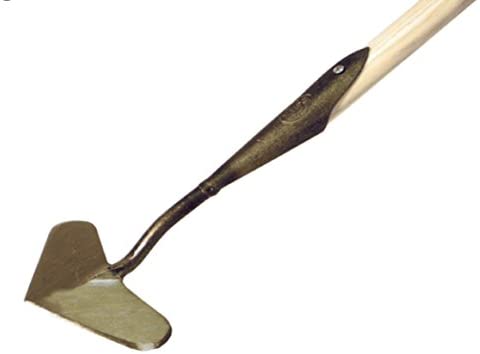
A heart-shaped garden hoe has a flat blade. The pointed edge is usually used to cut into the sod or hard, compacted soil. On the other hand, the “V” groove at the top of the heart works well to pull out larger weeds. In addition, the blade is usually rotatable, making it easier to use the heart-shaped garden hoe to get the job done.
Diamond Hoe
A diamond hoe is a type of scuffle hoe that is ideal for annual or perennial weeds. It is characterized by a diamond-shaped blade with four sharpened sides. The pointy ends of the diamond blade are also ideal for nicking out weeds that are close to your favorite plants without causing any unwanted damage to the plant.
Sweeping Hoes
Introduced in the 1980s, sweeping hoes are the latest addition to the garden hoe family. The correct way to use a sweeping hoe is to hold the handle fairly upright, positioning the blade near your feet. You can then sweep the blade back and forth in short strokes to uproot or cut weeds. Keep your eyes on the blade will allow you more accuracy. These garden tools are also fit for loose or soft soil.
Russian Swage Hoe
The Russian Swage Hoe is an excellent weeding hoe. With a pointed tip, it is compact enough to weed between tightly packed plants quickly. At the same time, the blade is sharp enough to tackle big weeds. Make sure you use a sweeping action to ensure fine detailing. It usually comes with a long handle to reduce effort and minimize bending.
Collinear Hoe/Onion Hoe
A Collinear hoe is essentially a kind of draw hoe. However, it can also pass for a sweeping hoe as it is designed to be used while standing upright. It is an excellent choice when weeding around low-lying crops or rocky soil.
Reciprocating Hoes
Reciprocating hoes are used for weeding in medium or soft soil with back and forth scrubbing action. This is the only group of garden hoes that comes with moving parts. The blade features a pivot, which means it scrapes through the soil at a shallow angle.
As a result, reciprocating hoes uproot larger weeds and cut smaller weeds. Keep in mind that these garden hoes do not have an adjustable handle. So, make sure you try a reciprocating hoe before buying one to make sure it is perfect for you according to your height.
Hula Hoe
The Hula hoe can be described as a Stirrup hoe or Scuffle hoe with a wiggle! The blade is designed to have a little “wiggle” that helps adjust the angle as it skims horizontally below the soil’s surface in place. It can be used to cut on both forward and backward strokes.
How to Choose a Garden Hoe
If you are new to the world of gardening, choosing the right garden hoe can be confusing. It can be hard to tell which tool is designed to perform what job. Luckily, we have the perfect solution for you. All you have to do is consider the following factors while choosing a garden tool.
- Blade
There’s another important factor that cannot be ignored – the blade of the garden hoe. Hoe blades are generally created using carbon or stainless steel. While carbon blades remain sharp with frequent sharpening, they tend to rust quickly, especially when they are not cared for properly. On the other hand, stainless steel blades naturally stay shiny for a long time but are hard to sharpen when needed.
- Handle
A quality handle is essential to ensure a tight grip and a comfy experience. The ultimate point of using any gardening tool is to make your work easier and more comfortable. If your garden hoe can’t do that for you, it is essentially of no use. Therefore, it is best to try the handle to make sure it offers a comfortable grip.
Generally, there are two options to go about handles – you can either choose a wooden handle or an aluminum one. Wooden handles are heavier, but they provide a solid grip. They also feel warmer to the hand. Aluminum handles covered with rubber or plastic coating are lightweight, but they can be cold and offer less grip.
- Design & Style
The design and style of a gardening hoe determine its purpose and the motion required to use the hoe. Consider the following factors to choose the right design and style.
- Purpose: The “purpose” of a gardening tool entails what it is most useful for. Keep in mind that different tools may be designed to perform the same job under different circumstances.
- Action: The “action” describes how the tool is operated.
- Soil: Different tools work best for different types of soils.
Conclusion on Garden Hoes
Using garden hoes effectively and successfully in the garden requires you to choose the right one – there’s no doubt about it. However, now you might be wondering what are some of the best garden hoes in the market? Well, it depends on the type of hoe you need.
For example, if you are looking for the best grubbing hoe with a simple traditional design, you may want to check out Midwest Gloves Grubbing Hoe. It offers great grip and gets the job done. Plus, if you have already got the handle, you can purchase the head on its own to save some cash.
On the other hand, if you are in the market for a best stirrup hoe or loop hoe, Seymour Midwest Loop Hoe with a replaceable blade might be worth considering as it is sturdy and super easy to use. The bottom line is that the best garden hoe for you depends on the job at hand.
Another fairly popular question most novice gardeners ask is how often you should hoe a garden? Once again, there is no hard and fast rule here. However, the general rule of thumb says that hoeing once every one to two weeks is good enough to prevent re-sprouting roots from becoming a problem. Choose a hot, dry afternoon with a little breeze to use your favorite garden hoes.
Now that you know all about the different types of garden hoes, it’s time to head out to your tool shed and get started. On the other hand, if you plan on stocking up your garden tools first, make sure you buy the right garden hoes to double the fun of gardening.
Would you also be interested in any type of garden hose storage, right?

